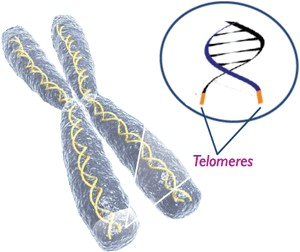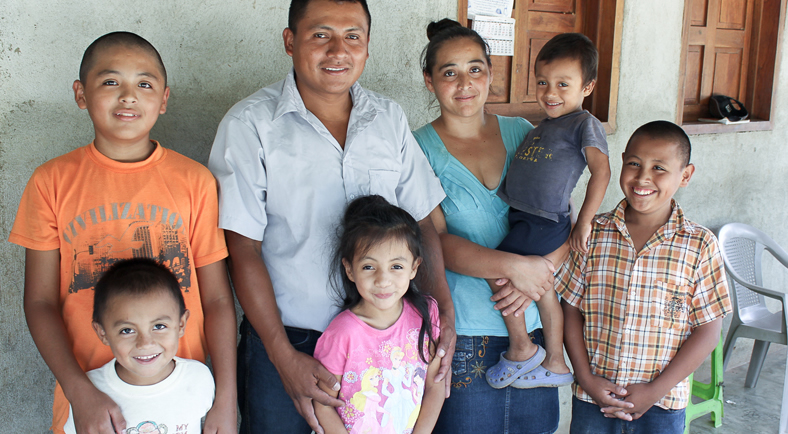|
|
Can having more children slow down aging?
A study by Simon Fraser University suggests the number of children born to a woman influences the rate at which her body ages — for the better!
A study led by health sciences professor Pablo Nepomnaschy and Cindy Barha, a postdoctoral researcher, found that women who give birth to more surviving children exhibited longer telomeres — the protective tips located at the end of each DNA strand.
The study assessed the number of children born to 75 women from two neighbouring rural Guatemalan communities. The participants' telomere lengths were measured at two time points 13 years apart, through salivary specimens and cheek swabs.
The work is published in PLOS One. 
This is the first study to examine the direct association between the number of children and telomere shortening in humans over time.
According to Nepomnaschy, the findings contradict life history theory which predicts that producing a higher number of offspring accelerates the pace of biological aging.
"The slower pace of telomere shortening found in the study participants who have more children however, may be attributed to the dramatic increase in estrogen, a hormone produced during pregnancy.
"Estrogen functions as a potent antioxidant that protects cells against telomere shortening."
Pablo Nepomnaschy PhD, Professor of Health Sciences, the Maternal and Child Health Laboratory, Simon Fraser University Faculty of Health Sciences
The social environment that the study participants live in may also influence the relationship between their reproductive efforts and the pace of aging.
"The women we followed over the course of the study were from natural fertility populations where mothers who bear numerous children receive more social support from their relatives and friends," explains Nepomnaschy.
"Greater [social] support leads to an increase in the amount of metabolic energy that can be allocated to tissue maintenance — thereby slowing down the process of aging."
Pablo Nepomnaschy PhD
Abstract
Life history theory (LHT) predicts a trade-off between reproductive effort and the pace of biological aging. Energy invested in reproduction is not available for tissue maintenance, thus having more offspring is expected to lead to accelerated senescence. Studies conducted in a variety of non-human species are consistent with this LHT prediction. Here we investigate the relationship between the number of surviving children born to a woman and telomere length (TL, a marker of cellular aging) over 13 years in a group of 75 Kaqchikel Mayan women. Contrary to LHT’s prediction, women who had fewer children exhibited shorter TLs than those who had more children (p = 0.045) after controlling for TL at the onset of the 13-year study period. An “ultimate” explanation for this apparently protective effect of having more children may lay with human’s cooperative-breeding strategy. In a number of socio-economic and cultural contexts, having more chilren appears to be linked to an increase in social support for mothers (e.g., allomaternal care). Higher social support, has been argued to reduce the costs of further reproduction. Lower reproductive costs may make more metabolic energy available for tissue maintenance, resulting in a slower pace of cellular aging. At a “proximate” level, mechanisms involved may include the actions of the gonadal steroid estradiol, which increases dramatically during pregnancy. Estradiol is known to protect TL from the effects of oxidative stress as well as increase telomerase activity, an enzyme that maintains TL. Future research should explore the potential role of social support as well as that of estradiol and other potential biological pathways in the trade-offs between reproductive effort and the pace of cellular aging within and among human as well as in non-human populations.
About Simon Fraser University:
As Canada's engaged university, SFU is defined by its dynamic integration of innovative education, cutting-edge research and far-reaching community engagement. SFU was founded almost 50 years ago with a mission to be a different kind of university--to bring an interdisciplinary approach to learning, embrace bold initiatives, and engage with communities near and far. Today, SFU is a leader amongst Canada's comprehensive research universities and is ranked one of the top universities in the world under 50 years of age. With campuses in British Columbia's three largest cities--Vancouver, Surrey and Burnaby--SFU has eight faculties, delivers almost 150 programs to over 30,000 students, and boasts more than 135,000 alumni in 130 countries around the world.
Return to top of page
|
|
|
Jan 12, 2016 Fetal Timeline Maternal Timeline News News Archive

This is the first study to examine the direct association between the
number of children and telomere shortening in humans over time.
Image Credit: World Vison by Roo Ciambriello in Child Sponsorship
|
|
|
|




